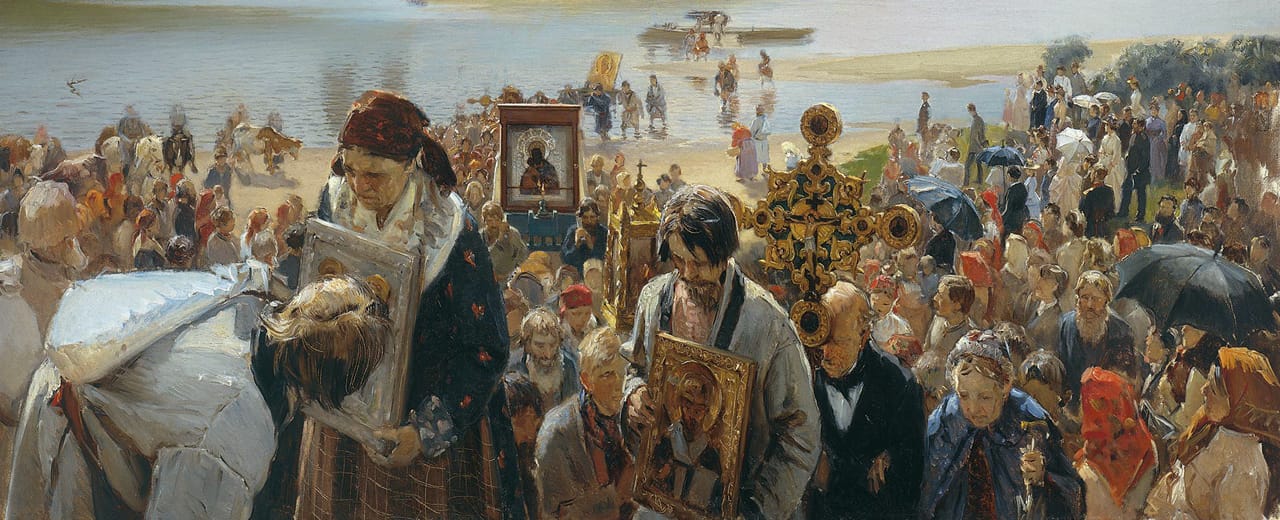Introduction
On this website, we observe two calendars, one for civic events and another for Church events. The Civic Calendar is the everyday Gregorian Calendar used throughout much of the world. The Church Calendar is the Julian Calendar, used in England until 1752 and still used in the Russian Church.
WE use two different calendars on this website: the New Style and the Old Style.
The New Style calendar is the one we are all familiar with in Europe, the Gregorian Calendar devised towards the end of the sixteenth century by the Roman Catholic Church under Pope Gregory XIII, and published on the day named on that calendar as February 24th, 1582. According to the Gregorian calendar, today is November 21, 2024.
The Old Style calendar is the Julian Calendar first brought in by Julius Caesar at Rome in the first century BC. The leap-year calculations in this calendar have a flaw in them, which means that the Julian calendar is out of step with the heavens. The difference grows (and occasionally shrinks) over time. At present, the discrepancy stands at thirteen days, and according to the Julian calendar, today is November 8, 2024.
‘English Style’
Notwithstanding its weaknesses, the Old Style dating continued to be used officially in Great Britain until 1752. The resistance to change arose chiefly from the unwillingness of the Church of England, a Protestant church, to accept a calendar promulgated by any Pope of Rome, since the Roman Popes claimed authority not only over the English Church but over the English Crown too. For much the same reason, and also because the New Style broke some long-standing conventions without a by-your-leave or indeed any discernible need, the Eastern Churches have adopted the New Style only with reluctance, and the Russian Church still uses the Old Style to determine the time of all its feasts and fasts. That is why the Russian Church keeps Christmas on January 7th NS, which is December 25th OS, and why Russian Easter does not always fall on the same Sunday as Western Easter.
Although this may appear perverse, it is worth recalling that millions of Muslims use their Hijri calendar to calculate their feasts and fasts, and millions of Hindus use their Panchanga calendar for the same purpose. So the English of the past and the Russians of the present are not really very unusual, after all. Moreover, the bishops assembled at the ground-breaking Council of Nicaea in AD 325 agreed that as a matter of principle, the Church would determine her feasts her own way, without reference to others.
On Clay Lane
Here on Clay Lane, secular anniversaries such as births, battles, the accession of a monarch or the publication of a book, are always marked on the corresponding day of the month in the Gregorian calendar, regardless of the calendar in use at the time when the event took place. The Gregorian calendar is also used for some major Christian feasts, such as Easter, Christmas and the Feast of St George, England’s patron saint. However, Church feasts and fasts appear primarily on their Julian ‘Old Style’ or ‘English Style’ date. The Julian calendar was the calendar of the great English saints; it was the calendar of the English church throughout the Middle Ages; it was the calendar of the English Reformation; and it is the calendar of the Russian Church to this day. This last may prove to be as important a consideration as the others, if authentic Christianity is to enjoy a revival in England. See Herbert Bury on If Russia Gives a Lead.
The New Year
Finally, a word about the New Year. For a long time, Christians in England and indeed Russia kept New Year’s Day on March 25th, Lady Day, the Feast of the Annunciation to the Blessed Virgin Mary. The United Kingdom’s tax year starts on April 6th because that was March 25th on the English Style calendar when the switch to the Gregorian was made. Under the influence of the Gregorian calendar, New Year’s Day gradually moved to January 1st, which is why some seventeenth-century writers give dates such as January 6th 1660/1661, to allow for different New Year traditions. Here on Clay Lane I keep to the January 1st convention for dating, which could hardly be dispensed with now; nevertheless, I should like to see a Church and ceremonial New Year festival kept with parades and parties on Lady Day — a Spring day full of hope.
